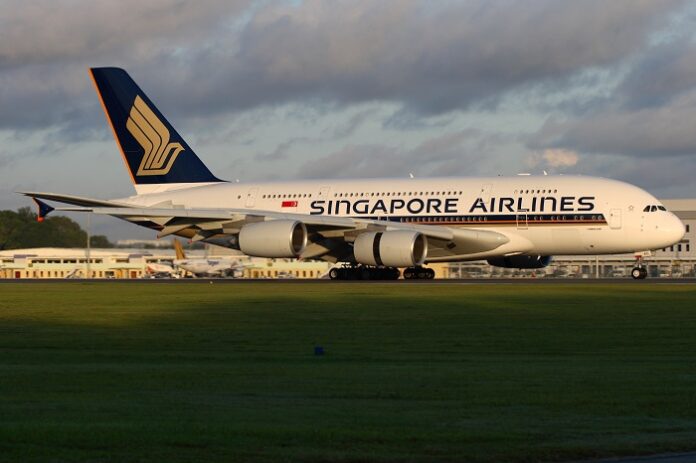
-
Global airline industry is expected to post net profit of $4.7 billion – a 0.6% net margin – the first profit since 2019 when industry net profit was $26.4 billion, with 3.1% net margin
-
In 2022, airline net losses should be $6.9 billion, lower than $9.7 billion loss for 2022 in IATA’s June outlook. This is significantly better than losses of $42 billion in 2021 and $137.7 billion in 2020
Flying back to profits in 2023, the global airlines industry is on course to make small net earnings of US$4.7 billion, its first since 2019, as carriers continue to cut losses from the COVID-19 pandemic’s impact on their business this year.
The International Air Transport Association attributes next year’s rebound to the industry cutting its estimated net losses in 2022 to $6.9 billion, beating IATA’s $9.7 billion loss outlook in June and significantly better than losses of $42.0 billion in 2021 and $137.7 billion in 2020.
IATA’s director general Willie Walsh, in a press release on December 6, credited the airlines’ resilience that enabled them to strengthen their yields and control costs as fuel prices rose.
“Resilience has been the hallmark for airlines in the COVID-19 crisis. As we look to 2023, the financial recovery will take shape with a first industry profit since 2019,” said Walsh.
“But a $4.7 billion profit on industry revenues of $779 billion also illustrates that there is much more ground to cover to put the global industry on a solid financial footing. Many airlines are sufficiently profitable to attract the capital needed to drive the industry forward as it decarbonizes.”
Walsh said most airlines are flying back to profits as demand rebounds, many other carriers are struggling for various reasons, “including onerous regulation, high costs, inconsistent government policies, inefficient infrastructure and a value chain where the rewards of connecting the world are not equitably distributed”.
For 2022, passenger yields are expected to grow 8.4%, up from the 5.6% forecast in June, IATA said. Passenger revenues should grow to $438 billion, up from $239 billion in 2021.
Air cargo revenues, which should reach $201.4 billion, have played a key role in cutting losses. That is better than the June forecast, largely unchanged from 2021, and more than double the $100.8 billion earned in 2019.
Overall revenues are expected to grow 43.6% year on year to $727 billion.
IATA said most other factors evolved negatively after a downgrade of global GDP growth expectations from 3.4% in June to 2.9% and delays in removing COVID-19 restrictions in several markets, particularly China.
The June outlook expected passenger traffic to reach 82.4% of pre-crisis levels in 2022, but it now appears the industry demand recovery will reach 70.6%. Cargo was forecast to exceed 2019 levels by 11.7%; that will now more likely be moderated to 98.4% of 2019 levels.
Jet kerosene prices are expected to average $138.80/barrel for the year, much higher than the $125.50 expected in June due to higher oil prices exaggerated by a jet crack spread well above historic averages. Even with lower demand reducing consumption, this has raised industry’s fuel bill to $222 billion, vs. $192 billion projected in June.
In 2023, the industry should tip into global net profit of $4.7 billion on revenues of $779 billion, a 0.6% net margin, despite global GDP growth slowing to 1.3% from 2.9% in 2022.
Main drivers
The passenger business should generate $522 billion revenue. Passenger demand should be 85.5% of 2019 levels, reflecting uncertainties over China’s Zero COVID policy. Passenger count should hit 4.2 billion, the first above 4 billion time since 2019. Passenger yields should soften to -1.7%, despite demand growing at 21.1% than passenger capacity, up 18.0%.
Cargo markets, under greater pressure in 2023, should see revenues of $149.4 billion, $52 billion less than in 2022 but $48.6 billion better than in 2019. With economic uncertainty, volumes should fall to 57.7 million tons from a 65.6-million-ton peak in 2021.
Overall costs should grow 5.3% to $776 billion, 1.8 percentage points below revenue rise, supporting a swing to profits. Cost pressures come from labor, skill and capacity shortages. The total fuel spend for 2023 should be $229 billion, 30% of expenses.
Potential risks to the 2023 outlook are economic and geopolitical environment including economies falling into recession, slowing passenger and cargo demand; China’s COVID policy extending beyond 2023; and increased infrastructure charges or taxes to support sustainability efforts.
Regional performance
All regions’ financial performance continues to improve since losses at the depth of the pandemic in 2020. North America is the only region to return to profitability in 2022. Europe and the Middle East will join North America in this respect in 2023. Asia-Pacific will remain in the red.
North American carriers should see profits of $9.9 billion in 2022 and $11.4 billion in 2023 as passenger demand grows 6.4%. Over the year, the region is expected to serve 97.2% of pre-crisis demand levels with 98.9% of pre-crisis capacity.
European carriers are expected to see a loss of $3.1 billion in 2022, and a profit of $621 million in 2023. In 2023, passenger demand growth of 8.9%; the region is expected to serve 88.7% of pre-crisis demand levels with 89.1% of pre-crisis capacity.
Asia-Pacific carriers are expected to post a loss of $10.0 billion in 2022, narrowing to a $6.6 billion loss in 2023. Passenger demand growth of 59.8% in 2023 should outpace capacity growth of 47.8%. The region should serve 70.8% of pre-crisis demand levels with 75.5% of pre-crisis capacity.




